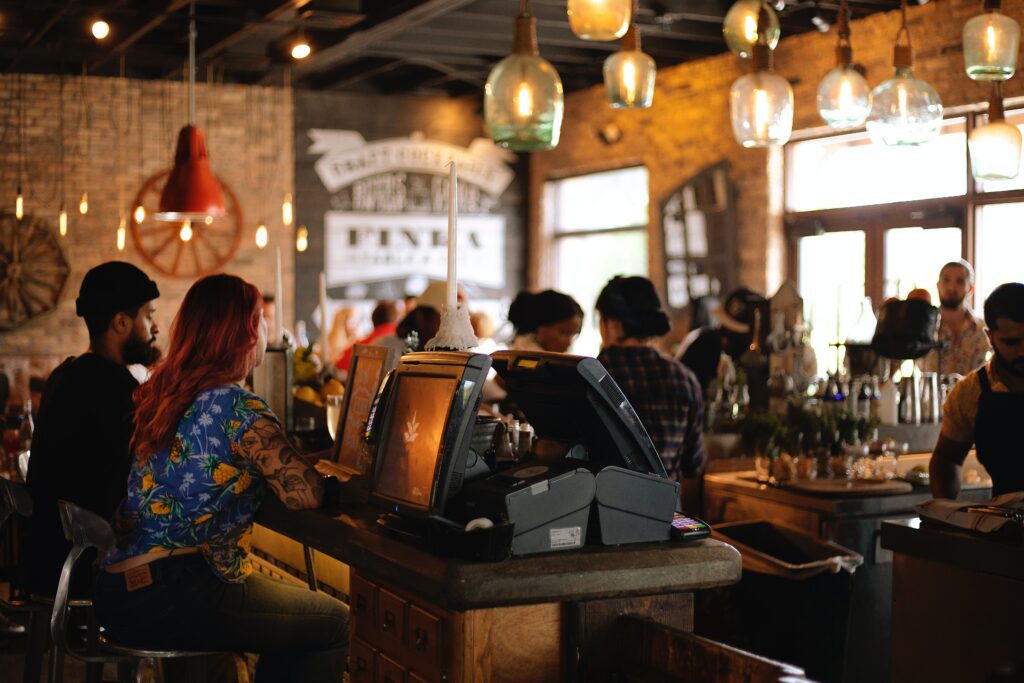The Guide to Restaurant Standard Operating Procedures (SOPs)

Are you part of a restaurant management team or learning and development department looking to create standard operating procedures (SOPs)? Establishing effective SOPs for your restaurant is an essential step in managing busy services and running operations smoothly. This guide provides a one-stop resource on how to build successful restaurant SOPs that will help you enhance efficiency, improve customer service, stay compliant with regulations, maintain food safety standards, and ultimately increase profits. With the right level of dedication and focus, any restaurant can use these strategies to optimize its business performance.
What are Restaurant SOPs?
The success of any restaurant hinges on a flawless operation, and that’s where digital SOPs come into play. SOPs are essentially a set of established processes and protocols that ensure the smooth functioning of the entire restaurant – from the kitchen to the front of the house. These guidelines not only help maintain the quality of service, but also help in cost control, staff training, and ultimately, customer satisfaction. SOPs can encompass everything from food handling and preparation, to staff grooming and behavior, and even emergency protocols.
By having a set of SOPs in place that outlines clear expectations for all staff members, restaurants can enhance their reputation, improve their efficiency, and ensure a great experience for their diners.
What is a Restaurant SOP Checklist?
When it comes to running a successful restaurant, having standard operating procedures (SOPs) in place is essential. These procedures not only ensure consistency in food preparation and service but also help maintain a safe and clean environment for both employees and customers. To keep track of these crucial SOPs, an SOP checklist is often used. This tool provides a simple yet effective way to verify that all procedures are being followed correctly and to identify any areas that may need improvement. By implementing an SOP checklist in your restaurant, you can increase efficiency, reduce errors, and ultimately provide a better dining experience for your customers.
Key Components of a Restaurant SOP Checklist
A comprehensive Restaurant SOP Checklist should cover several critical areas to ensure all aspects of the restaurant operation are efficient and effective. These areas include:
- Kitchen Operations: This section ensures that food preparation and cooking procedures adhere to health and safety standards. It includes checks for cleanliness, proper storage of food, and the correct use of kitchen equipment.
- Front-of-House Operations: Focused on the dining area and customer service, this part of the checklist covers table-setting standards, customer greeting procedures, and service consistency.
- Sanitation and Cleanliness: Important for maintaining a safe environment for both staff and customers, this area includes regular cleaning schedules, proper waste management practices, and pest control measures.
- Health and Safety Compliance: This ensures that the restaurant meets all local health and safety regulations, covering food handling, allergen management, and emergency procedures.
- Employee Training and Welfare: A section dedicated to staff, ensuring they are properly trained, aware of their responsibilities, and working in a safe, respectful environment.
By meticulously following a Restaurant SOP Checklist that encompasses these key areas, a restaurant can operate smoothly, ensuring customer satisfaction and loyalty while also maintaining a happy and healthy workplace for employees.
Understand the Importance of SOPs in a Restaurant Setting
In the dynamic realm of restaurants, standard operating procedures (SOPs) stand as the linchpin for operational efficiency and service excellence. These meticulously documented procedures form a structured guide encompassing vital aspects like food handling, hygiene, customer service, and issue resolution. SOP adherence empowers restaurant staff to:
- Streamline work processes for increased efficiency
- Consistently deliver the exceptional service customers expect
However, SOPs aren’t solely confined to front-of-house operations; they hold equal significance behind the scenes, particularly in the kitchen. Rigorous adherence to procedures governing equipment sanitation and food handling minimizes the risk of foodborne illnesses. Essentially, SOPs form the backbone of a well-run restaurant, ensuring top-tier quality and guaranteeing customer satisfaction.
Identify Key Safety Protocols That Must Be Followed in the Restaurant
When it comes to running a safe and successful restaurant, there are key safety protocols that must be followed. One of the most important is regular cleaning and sanitation, which can prevent the spread of harmful bacteria and viruses. This includes cleaning surfaces, utensils, and equipment, as well as ensuring that employees wash their hands frequently and properly. Another crucial protocol is ensuring that food is cooked and stored at the appropriate temperatures to avoid contamination. Additionally, having clear emergency procedures in place and conducting regular safety training for employees can help ensure that everyone knows how to respond to a crisis. By adhering to these safety protocols, restaurants can create a healthy and secure environment for both employees and customers alike.
Learn about Common In-House Procedures and Regulations for Staff, Customers, and Food Preparation
Have you ever peeked into the bustling kitchen of your favorite restaurant and wondered about the meticulous procedures and regulations that govern its operations? Whether you’re a curious customer intrigued by what happens behind the scenes or a new staff member eager to grasp the intricacies of in-house protocols, understanding these measures offers insight into the comprehensive efforts undertaken by restaurants to prioritize safety and uphold quality standards.
Importance of In-House Procedures and Regulations
Ensuring Staff and Customer Safety
Central to every reputable restaurant’s operations are measures aimed at safeguarding the well-being of both patrons and employees. Paramount among these protocols is the strict enforcement of hygiene practices, particularly in the handling of food and interactions within the restaurant environment.
- Hygiene Protocols: Rigorous hand-washing practices form the cornerstone of these protocols. Staff members are trained in proper hand hygiene techniques, emphasizing the importance of frequent and thorough hand-washing before food preparation, after handling raw ingredients, and after using the restroom. This crucial practice minimizes the risk of cross-contamination and the spread of foodborne illnesses.
- Sanitization Procedures: Beyond personal hygiene, routine sanitization of surfaces, utensils, and kitchen equipment is imperative. Stringent cleaning schedules ensure that all areas within the restaurant, especially those in direct contact with food, are maintained at a high standard of cleanliness.
Adherence to Food Preparation Standards
Apart from ensuring safety, restaurants operate within a framework of regulations governing food preparation. These standards are meticulously followed to guarantee the quality and safety of the culinary creations served to customers.
- Temperature Monitoring: The meticulous monitoring of food temperatures throughout the cooking and storage processes is a fundamental practice. This includes using calibrated thermometers to verify that food is cooked at the appropriate temperatures to eliminate harmful bacteria and stored under the correct conditions to maintain freshness and safety.
- Cross-Contamination Prevention: Preventing cross-contamination, especially in food preparation areas, is a critical aspect of maintaining food safety. Staff members are trained to handle different food items separately, use designated cutting boards for raw and cooked foods, and sanitize equipment thoroughly to prevent the transfer of harmful bacteria.
Transparency and Assurance for Customers
Understanding these common in-house procedures not only offers insight into the meticulous efforts undertaken but also instills confidence in customers regarding the restaurant’s commitment to their safety and satisfaction. Knowing that restaurants adhere to stringent protocols gives customers peace of mind, allowing them to dine and enjoy the culinary offerings with trust and assurance.
In essence, these in-house procedures and regulations serve as the pillars of a restaurant’s commitment to excellence, ensuring that every meal served is not only delicious but also prepared with the utmost care and adherence to the highest standards of safety and quality.
Define Roles and Responsibilities for Each Team Member
A successful team is one where every member knows their roles and responsibilities. Clear communication regarding who does what can streamline the entire team’s workflow, increasing productivity and ensuring that everyone’s talents are being put to use effectively. Establishing individual roles removes ambiguity from the team dynamic, enabling each member to take ownership of their assigned tasks while also being accountable for their contributions to the team’s success. By defining each team member’s role and responsibility, the team can work together more cohesively towards a common goal, leading to improved collaborations and ultimately, greater achievements.

A Restaurant Training Platform for Optimized Restaurant SOPs
Overall, restaurant standard operating procedures (SOPs) are critical to the success of any restaurant. To sum it up, a frontline employee training platform that works within the restaurant industry, such as Inkling’s, can help restaurants maintain restaurant standardized operating procedures (SOPs) for various aspects of the business, such as:
- Food preparation
- Cleaning
- Customer service
Adopting a restaurant digital learning platform and eLearning solution can revolutionize how restaurants implement and adhere to SOPs. These technological tools offer an accessible, flexible, and engaging way to train staff on the essential SOPs that govern various operations within a restaurant. Here’s how they can be particularly beneficial:
- Interactive Training: Digital platforms can transform SOP training from static, text-heavy manuals to interactive sessions with videos, quizzes, and real-life scenarios. This approach can enhance understanding and retention among staff, ensuring that they are more likely to follow these procedures correctly.
- Consistency Across Locations: For restaurants with multiple locations, eLearning ensures that all employees, regardless of where they are, receive the same training content. This uniformity is crucial for maintaining consistent service and operational standards across the board.
- Real-Time Updates and Accessibility: Digital platforms allow for SOPs to be updated in real time and disseminated quickly across the entire organization. Staff can access the latest procedures anytime and from anywhere, reducing the gap between learning and application.
- Tracking and Reporting: With built-in tracking and reporting features, these platforms offer insights into employee progress and comprehension. Managers can identify areas where additional training may be needed, ensuring that all team members achieve the requisite proficiency in SOPs.
Overall, by integrating a digital learning platform and eLearning solutions into their training repertoire, restaurants can significantly improve the efficiency, consistency, and effectiveness of their SOP training process. This not only leads to a higher standard of operations but also contributes to an enhanced customer experience




